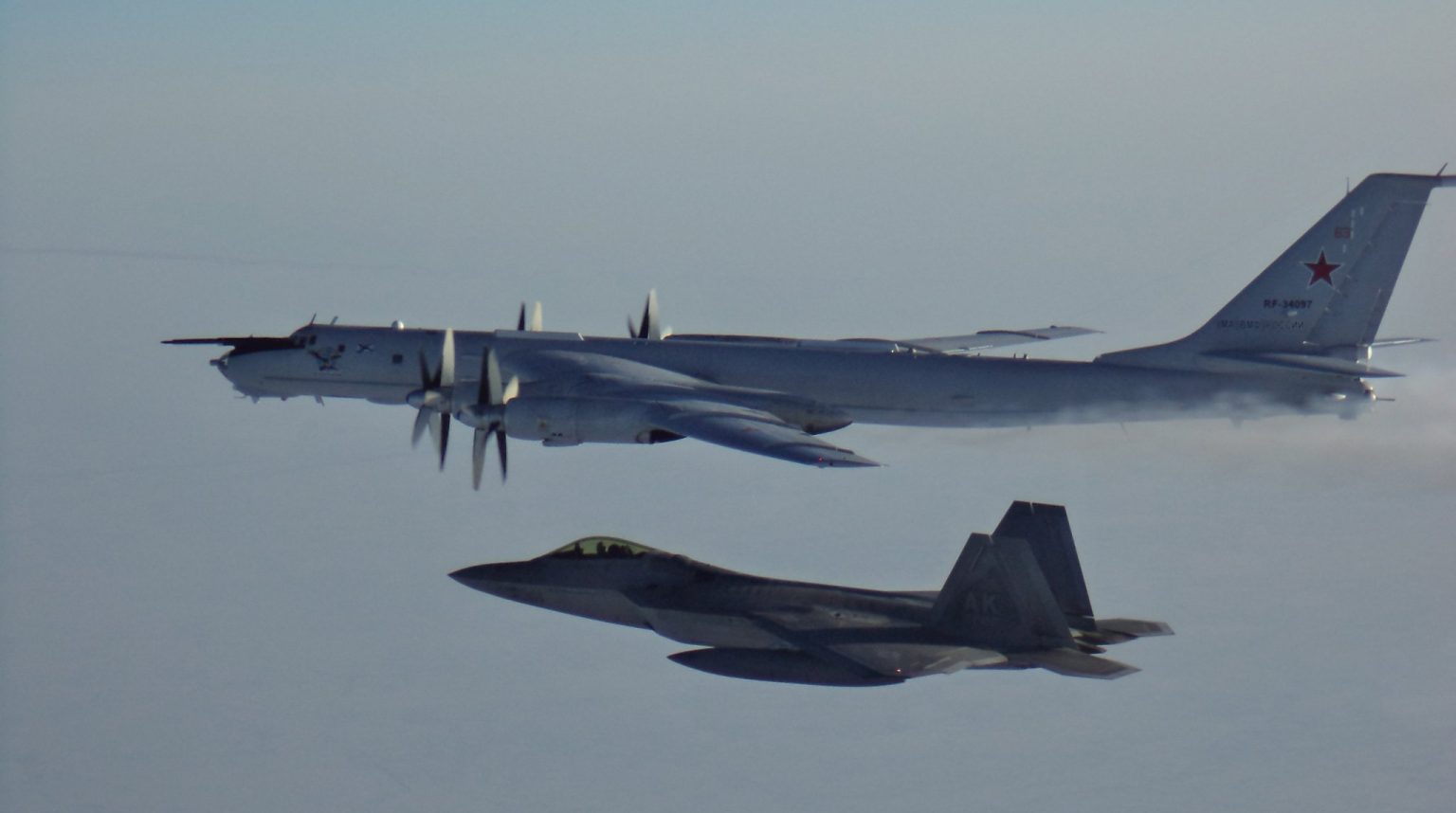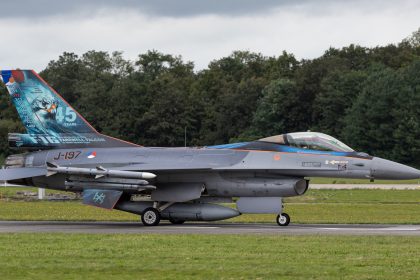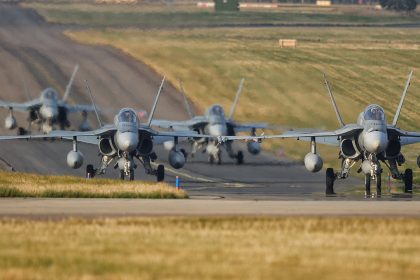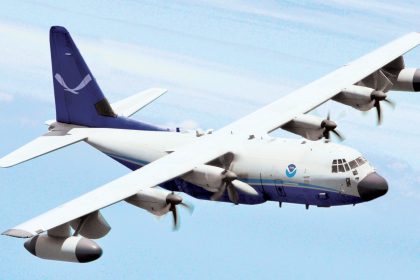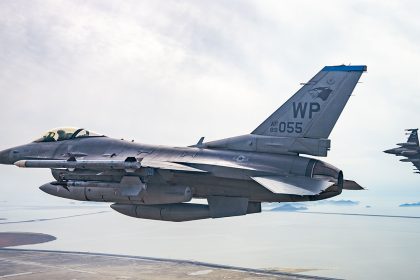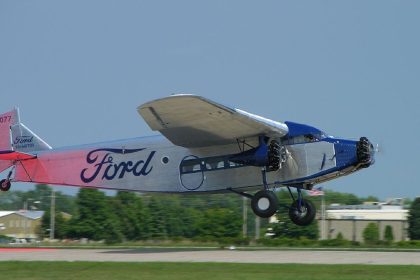Looks like Russian Naval Aviation is pretty active in these days with their Tu-142 maritime reconnaissance and ASW (Anti-Submarine Warfare) aircraft.
As you will probably remember, on Mar. 7, 2020, two Tu-142s (a Tu-142MK ASW aircraft and a Tu-142MR VLF band comms relay aircraft) flew close to the NATO airspace in northern Europe and were intercepted by the RNoAF F-16s and F-35s (at their first intercept of Russian aircraft) and by the RAF Eurofighter Typhoons.
Noteworthy, two days later, on Mar. 9, 2020, U.S. Air Force F-22 Raptors and Royal Canadian Air Force CF-18s, supported by KC-135 Stratotanker and E-3 Sentry AWACS aircraft, intercepted two Russian Tu-142 maritime reconnaissance aircraft that had entered the Alaskan ADIZ (Air Defense Identification Zone).
The ADIZ, or “Air Defense Identification Zone”, where the intercept occurred is international airspace that extends 200 miles from the U.S./Canadian coastline and is monitored in the interest of national security. U.S. territorial airspace begins only 12 miles from the coastline. As usual, the Russian aircraft stayed well clear of the 12-mile U.S. air space limit during the encounter between the three countries.
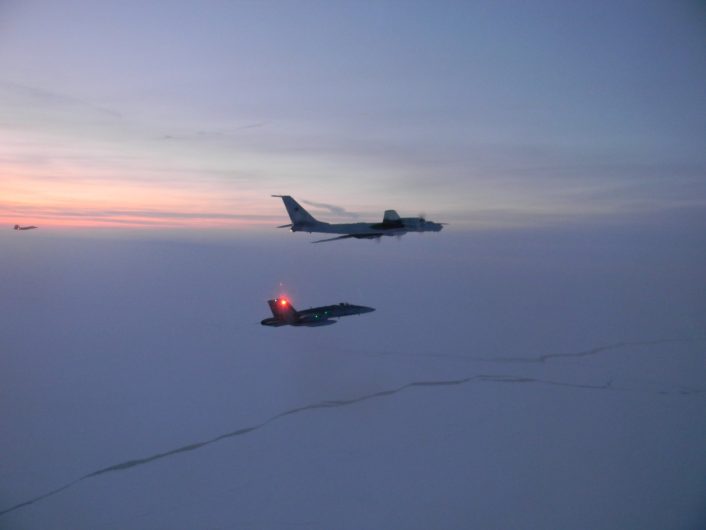
While the specific reasons for the intercepts are unknown Tu-142s carry out long-range navigations and take part to exercises with naval units once or twice a year (or at least, the concentrate missions close to the NATO airspace borders in a couple of periods, March being one of these). As often explained in details, Bears sometimes fly near international borders to collect data about a country’s air defense network and to collect mapping and signals intelligence to build a communications and early warning “Order of Battle” so that radio and radar frequencies can be identified and cataloged for future use. The missions may happen periodically as the electronic order of battle is changed frequently to maintain operational security. Depending on the weather and time of day, the intercepts, when and if they happen, can produce incredible photos and video. The United States also conducts similar surveillance missions close to Russian open air space areas for likely related reasons.
F-22s carry out their intercept missions with radar reflectors and external fuel tanks: peacetime QRA (Quick Reaction Alert) doesn’t require the Raptors to fly in stealth mode.
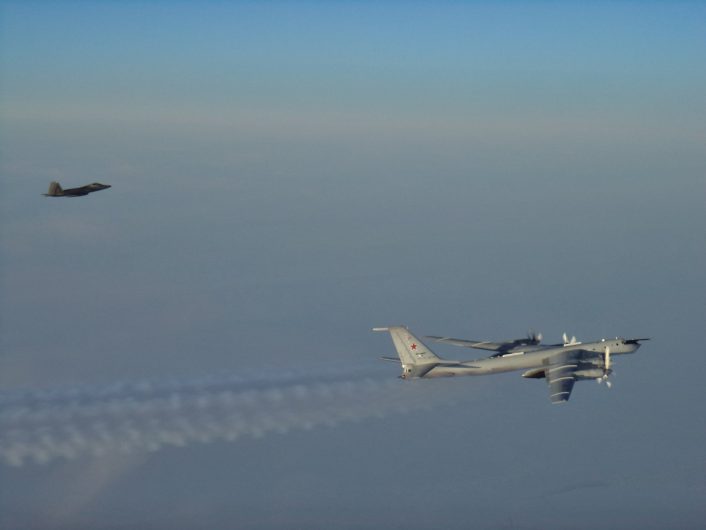
H/T @ryankakiuchan for the heads-up!

